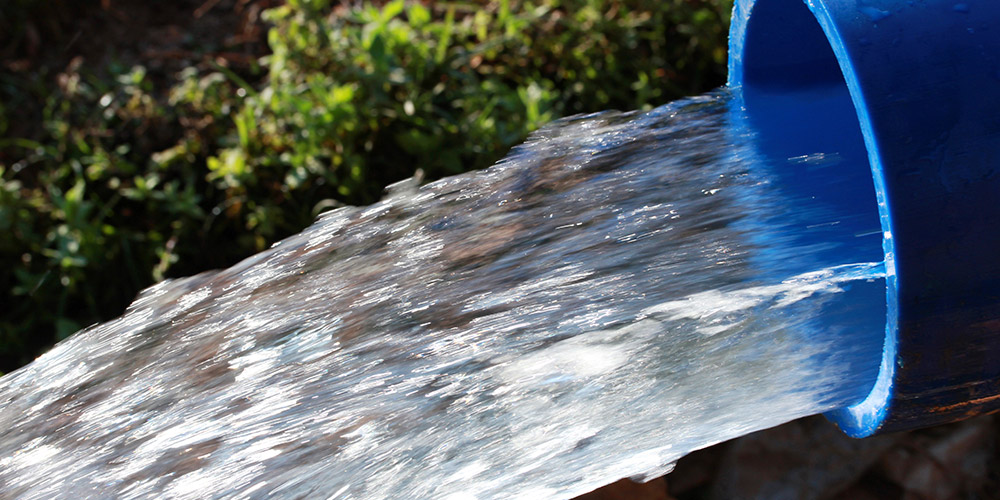 By Paul S Weiland This report first appeared in the Center for California Water Resources Policy & Management
By Paul S Weiland This report first appeared in the Center for California Water Resources Policy & Management
The Department of Fish and Wildlife and the Fish and Game Commission both play key roles in the implementation of the California Endangered Species Act (CESA). The Commission must act on petitions to list species under the Act, initially by determining whether listing “may be warranted,” in which case the species becomes a candidate for listing and the Commission subsequently determines whether listing as threatened or endangered is warranted. At both stages, the Commission’s decision is informed by a report and recommendation issued by the Department. At the outset, once Commission staff deem a petition to be complete, the Department is required to prepare a “written evaluation report” to inform the Commission’s decision as to whether the species should be a candidate for listing. If the Commission designates a species as a candidate, the Department is then required to prepare a written peer-reviewed status report based on the best scientific information available to inform the decision whether the species should be listed as threatened or endangered.
listing as threatened or endangered is warranted. At both stages, the Commission’s decision is informed by a report and recommendation issued by the Department. At the outset, once Commission staff deem a petition to be complete, the Department is required to prepare a “written evaluation report” to inform the Commission’s decision as to whether the species should be a candidate for listing. If the Commission designates a species as a candidate, the Department is then required to prepare a written peer-reviewed status report based on the best scientific information available to inform the decision whether the species should be listed as threatened or endangered.
In November 2023, San Francisco Baykeeper and other groups submitted a petition to list the white sturgeon in California as a threatened species under CESA to the Commission. Petitioners did not include any of the raw data they relied on in describing the white sturgeon’s abundance, its trend in population numbers, and its distributional range in the petition or otherwise make such data available to the Commission and the public. Nonetheless, in March 2024, the Department issued its written evaluation report. That report is devoid of any critical analysis of the substance of the petition. Rather, it is a recitation of the contents of the petition, stating:
sturgeon’s abundance, its trend in population numbers, and its distributional range in the petition or otherwise make such data available to the Commission and the public. Nonetheless, in March 2024, the Department issued its written evaluation report. That report is devoid of any critical analysis of the substance of the petition. Rather, it is a recitation of the contents of the petition, stating:
“The Petition discusses life history of White Sturgeon…”
“The Petition discusses range and distribution for White Sturgeon…”
“The Petition discusses the kind of habitat necessary for survival for White Sturgeon in California…”
“The Petition discusses the abundance of White Sturgeon in California…”
“The Petition discusses White Sturgeon population trends in California…”
“The Petition discusses factors affecting ability to survive and reproduce…”
“The Petition discusses the degree and immediacy of the threat…”
“The Petition discusses the impact of existing management efforts…”
“The Petition provides a list of 68 references…”
Following that direct recitation of the petition’s contents, the report declares: “the Department has determined that the Petition and other relevant information provide sufficient scientific information to indicate that the petitioned action to list the White Sturgeon as threatened may be warranted.”
In part, in reliance on the Department’s report, the Commission in June 2024 determined that listing may be warranted and made the white sturgeon a candidate for listing. This determination triggered the requirement for the Department to prepare its status review of the white sturgeon. The current deadline for the Department to issue its status review is January 2026. More importantly, the determination made in reliance on the superficial assessment of the petition by the Department triggered the “take” prohibition under CESA, halting any activity that might be anticipated to result in take of even a single white sturgeon.
The white sturgeon is a long-lived fish that is native to the west coast of North America from approximately Monterey, California in the south, north to the Gulf of Alaska. The species is predominantly anadromous, although a small number of landlocked populations exist. White sturgeon reside in San Francisco Bay and the Sacramento-San Joaquin Delta, spawning upstream in the Sacramento and San Joaquin rivers and feeder tributaries to them. No data indicate that the geographic range of white sturgeon has retracted over the past 50 years. In the San Francisco Estuary the white sturgeon has been subject to varying levels of fishing pressure over that same time period, but no reliable data indicate that the abundance of white sturgeon has declined during that time. The data sets available on the white sturgeon do not allow scientists to draw reliable conclusions regarding the species’ population dynamics in the Estuary.
them. No data indicate that the geographic range of white sturgeon has retracted over the past 50 years. In the San Francisco Estuary the white sturgeon has been subject to varying levels of fishing pressure over that same time period, but no reliable data indicate that the abundance of white sturgeon has declined during that time. The data sets available on the white sturgeon do not allow scientists to draw reliable conclusions regarding the species’ population dynamics in the Estuary.
Recognizing that survey efforts to gather data providing essential information on white sturgeon population dynamics are not up to the task of informing a decision to list the species, the Department in 2024 implemented a new survey method for the species in collaboration with the Pacific States Marine Fisheries Commission and local sturgeon fishing guides. In July 2025, just one year into the new effort, the Department issued a press release entitled “Scientific Surveys Show Continued Decline in White Sturgeon Population.” In the press release and in a series of statements to the press over the following days, the Department made an unequivocal case that there has been a multi-decade decline in the white sturgeon population.
release entitled “Scientific Surveys Show Continued Decline in White Sturgeon Population.” In the press release and in a series of statements to the press over the following days, the Department made an unequivocal case that there has been a multi-decade decline in the white sturgeon population.
That action by the Department, at the same time it is tasked to prepare an objective status review of the petition to list the species based on the best available scientific information, is plainly improper. It creates the appearance that the fix is in at the Department, and it is a foregone conclusion that the agency will recommend listing before it has completed the status review process, including a peer review of the Department’s own analyses by outside experts. Further, it has the potential to taint the peer review as reviewers are likely to read and could be influenced by the media coverage generated by the Department’s narrative, which included startlingly unsupported titles such as “A native California species is plummeting by the thousands.”
status review process, including a peer review of the Department’s own analyses by outside experts. Further, it has the potential to taint the peer review as reviewers are likely to read and could be influenced by the media coverage generated by the Department’s narrative, which included startlingly unsupported titles such as “A native California species is plummeting by the thousands.”
Along with the press release, the Department issued an eight-page report describing the new survey method, also indicating that as a matter of fact the white sturgeon population has declined materially from the 1990s to the present. To support this statement of “fact” the Department included a graph in the report, plotting estimates using three different analytical methods. That decision – to combine population estimates that were developed using three different methods of interpreting survey data – is contrary to accepted practices in population biology.
Yet another line of evidence that indicates the Department had a pre-decisional agenda was its selective presentation of those data. For example, in its report, the Department states: “Estimates from the 1990’s [sic] and earlier were around 150,000 or more white sturgeon within the range of the legal size to harvest.” But the very same report includes a graph (its Figure 2) with white sturgeon population estimates for three years in the 1990s (1990, 1993, 1997) — including two estimates under 25,000 individuals and just one with an estimate of 150,000. To its credit, the Department graphed the 95% confidence intervals around those estimates, although it does not report the actual ranges. What the graph demonstrates is that the estimates are unreliable for the purposes of determining whether the white sturgeon is threatened or endangered, with population size ranges from 5,000-40,000 in 1990, 0-35,000 in 1993, and 50,000-250,000 in 1997. What the graph does not demonstrate is that the population in the 1990s was 150,000 individuals or more.
demonstrates is that the estimates are unreliable for the purposes of determining whether the white sturgeon is threatened or endangered, with population size ranges from 5,000-40,000 in 1990, 0-35,000 in 1993, and 50,000-250,000 in 1997. What the graph does not demonstrate is that the population in the 1990s was 150,000 individuals or more.
State law provides that the Department is responsible to manage fish, wildlife, and plant resources, and the habitats on which they depend, for their ecological values and for the use and enjoyment of the public. It further provides that (i) the Department is responsible to use ecosystem-based management informed by credible science in all resource management decisions to the extent feasible and that (ii) all decisions made by Department personnel must follow well-established standard protocols of the scientific profession. It is difficult to reconcile the Department’s conduct in this instance with these statutory obligations. It is also hard to imagine that – now that the Department has tipped its hand – it could be considered an honest broker when carrying out the task of completing the status review of white sturgeon.
Department personnel must follow well-established standard protocols of the scientific profession. It is difficult to reconcile the Department’s conduct in this instance with these statutory obligations. It is also hard to imagine that – now that the Department has tipped its hand – it could be considered an honest broker when carrying out the task of completing the status review of white sturgeon.
As the legislature itself has acknowledged in the Fish and Game Code, there is a mismatch between the resources available to the Department and its statutory obligations. In this context, further overextending the agency by listing species based on specious scientific information and advocacy degrades the agency’s ability to take affirmative steps to protect other species that are actually in need of conservation and diminishes public trust in government scientists to call it like they see it. It also incentivizes parochial special interests to gin up listing petitions to monkey wrench public works and private development projects that are essential to the provision of food, water, electricity, shelter and other basic societal needs. The consequences are bad conservation outcomes, reduced social welfare, and a loss of trust in our more vital institutions. One can only hope that the Department leadership and the Governor will remain focused on the public interest and demand that those who report to them do the same.
Paul Weiland has received numerous accolades from prominent legal publications and ranking bodies, including being named Energy and Environmental Trailblazer by the National Law Journal, Top 100 Lawyer in California by the Daily Journal, Environmental MVP by Law360, and Top Lawyer in the US Environmental Practice arena by both Chambers and Partners and the Legal 500. More from Paul Weiland here.
ranking bodies, including being named Energy and Environmental Trailblazer by the National Law Journal, Top 100 Lawyer in California by the Daily Journal, Environmental MVP by Law360, and Top Lawyer in the US Environmental Practice arena by both Chambers and Partners and the Legal 500. More from Paul Weiland here.
DISCLAIMER OF RESPONSIBILITY; Waterwrights.net strives to provide its clients with the most complete, up-to-date, and accurate information available. Nevertheless, Waterwrights.net does not serve as a guarantor of the accuracy or completeness of the information provided, and specifically disclaims any and all responsibility for information that is not accurate, up-to-date, or complete. Waterwrights.net’s clients therefore rely on the accuracy, completeness and timeliness of information from Waterwrights.net entirely at their own risk. The opinions expressed in this report are those of the author and do not represent any advertisers or third parties.
ALL RIGHTS RESERVED. Copyright 2025 by WaterWrights.net

































